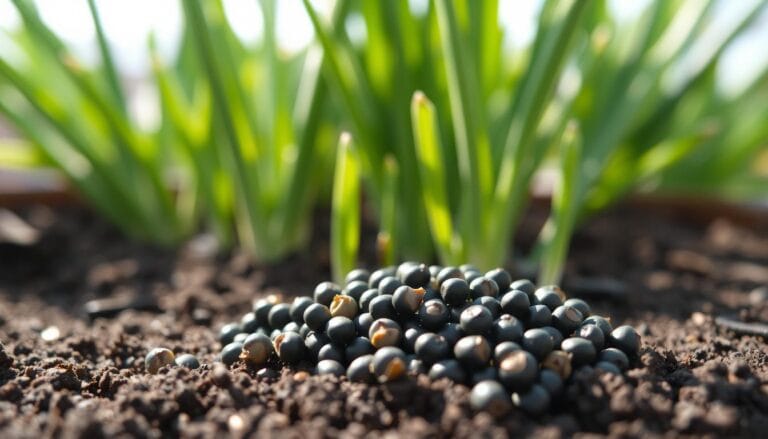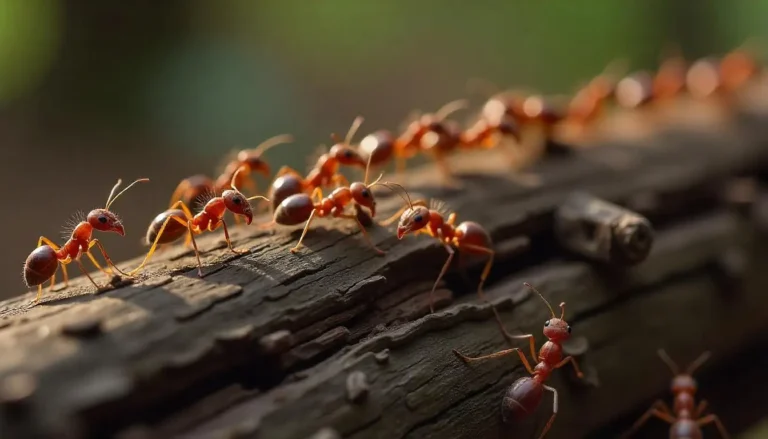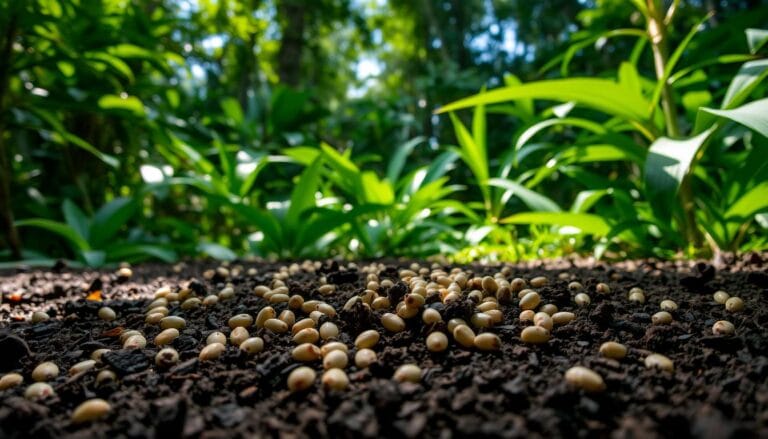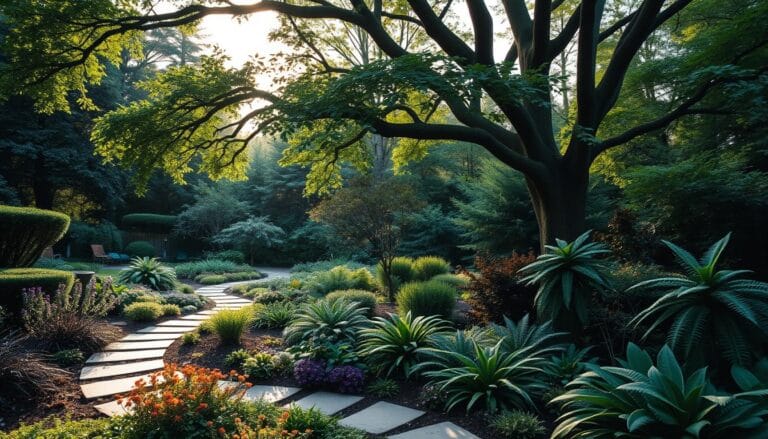Beautiful garden Ideas that you can copy, 100 plus design and landscaping
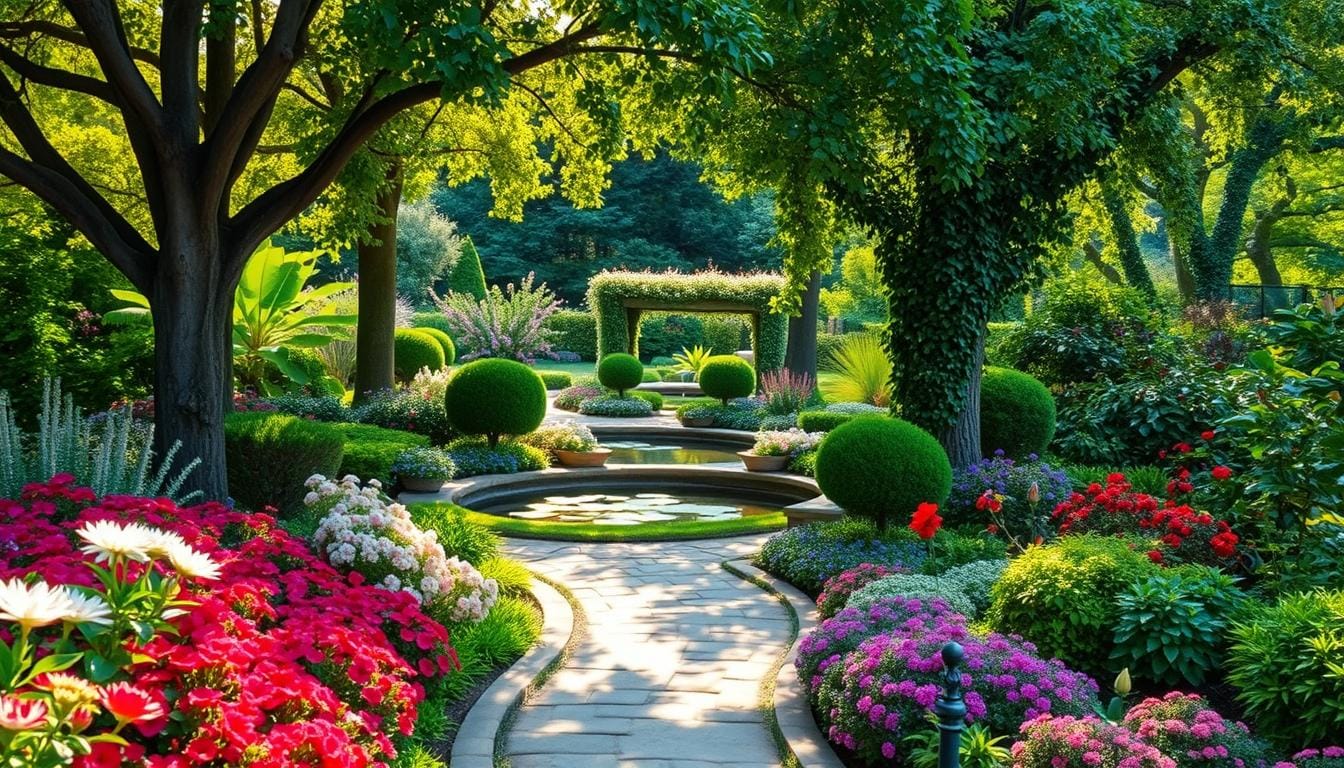
Your garden is where memories grow—literally and figuratively. Imagine turning that blank canvas into a welcoming space, like your living room. This guide offers 100+ proven designs to make your dreams come true, no matter your budget or skill.
Table of Contents
Key Takeaways
- Discover over 100 design ideas for gardens, terraces, and backyards.
- Learn how to blend function and style, from chicken coops to low-maintenance gravel paths.
- Save money with DIY projects like upcycled planters and mini ponds using stone birdbaths.
- Increase your home’s value by up to 100% with smart landscaping choices.
- Find budget-friendly solutions, like Aldi’s affordable trees or £35 DIY garden bars.
Transform Your Outdoor Space with These Garden Design Inspirations
Turning your yard into a beautiful space starts with planning. A well-designed garden boosts your home’s value and creates a peaceful spot. Start your journey today with these foundational steps.
Why Your Garden Deserves a Makeover
A refreshed garden is more than just pretty. It’s an investment. Properties with nice landscaping see a 15% value increase from features like hardscaped paths.
Plants like evergreens or drought-tolerant flowers can save 30-50% on water. This saves money and resources. Plus, gardens with plants help reduce stress and promote relaxation.
Understanding Your Space Before Starting
Start by checking your space: sunlight, soil, and drainage are important. Use a notebook to map:
- Shaded vs. sunny zones for plant selection
- Existing trees or slopes that can define zones
- Drainage patterns to prevent waterlogging
Small areas? Vertical solutions like wall-mounted planters or trellises add 50% more growing space. They’re great for small urban plots.
Setting a Realistic Budget for Your Garden Project
First, estimate costs for materials, plants, and labor. Start with basics like mulch, soil, and tools. DIY projects like container gardens can save 30-50% compared to hiring pros.
Phase your projects. Spend $200 on a herb bed this spring, then add lighting next season. Compare prices at Home Depot or local nurseries to stretch your budget.
Front Yard Landscaping Ideas That Make a Striking First Impression
First impressions are key, and your front yard is the first thing people see. Landscape Designs For Front Yard can make your entryway inviting and stylish. For those with small spaces, Small Front Yard Landscaping Ideas Townhouse provide clever solutions that still look great.
Small Front Yard Landscaping Ideas for Townhouses
Make the most of small areas with vertical gardens on fences or walls. Use tiered planters or hanging baskets to add height. Choose compact plants like boxwoods or hydrangeas to save space.
Container gardens let you change up your look with the seasons. Think annuals in spring and fall, and evergreens in winter. Small Front Yard Landscaping Ideas Townhouse also include pathway edging to make your space look bigger.
Creating Depth with Layered Planting
- Start with tall trees or shrubs at the property’s back edge.
- Add mid-layer flowering plants like lavender or salvia.
- Finish with low-lying ground covers like creeping thyme or sedum at the front.
Evergreens like juniper or boxwood keep your yard looking good all year. Seasonal blooms add color changes. Layering tricks like staggered plant heights make small yards feel bigger.
Balancing Hardscaping and Greenery
Use 30-40% of your yard for walkways, patios, or driveways. Choose permeable pavers or decorative gravel for easy maintenance. Pair these with plants that don’t need much water, like succulents or ornamental grasses.
For example, a stone path with small shrubs on either side is both practical and beautiful. Remember, 20% of your home’s value should go into landscaping to keep your home’s value up.
Creative Mulch Bed Ideas to Elevate Your Garden’s Appearance
Front Yard Mulch Bed Ideas are more than just soil cover. They add drama and texture to your landscape. Choose organic mulch like cedar, which resists rot, or go for decorative stones for a modern vibe. A 2–3-inch layer of mulch keeps moisture in, fights weeds, and boosts your yard’s look.
- Shape beds into geometric patterns or flowing curves to guide the eye.
- Add colored mulch in red or gold near walkways to create focal points.
- Edge beds with river rocks or brick pavers for a polished finish.
- Layer mulch depths strategically under trees to protect roots and beautify bare areas.
| Type | Examples | Pros | Cons |
|---|---|---|---|
| Organic | Cedar, pine straw, shredded leaves | Nutrient-rich, biodegradable | Needs yearly replenishment |
| Inorganic | Gravel, rubber, lava rock | Long-lasting, low maintenance | Doesn’t improve soil quality |
For easy care, try black rubber mulch in play areas or river rock in dry spots. Refresh mulch every 1–2 years to keep it looking good. Mix mulch beds with native plants like impatiens in shady spots for a complete look. Even small spaces can be beautiful with container gardens and mulch accents.
Designing Beautiful Flower Beds in Front of Your House
Flower beds in front of your house can make a big difference. They can change how people see your home and make it look better. A study by the University of Texas, Arlington found that well-kept gardens can increase your home’s value by 7%. Let’s explore how to plan and plant them well.
Seasonal Planning for Year-Round Color
For color all year, mix perennials like coneflowers with annuals like marigolds. Plant bulbs like daffodils for spring, then switch to zinnias and mums for summer and fall. Add evergreens like holly for year-round interest. Native plants like black-eyed Susans need less care and fit local climates well.
Arranging Plants by Height and Bloom Time
Layer plants to add depth. Here’s a simple guide:
| Front | Low-growing plants: lamb’s ear, alyssum |
|---|---|
| Middle | Midsized blooms: salvia, dianthus |
| Back | Tall plants: sunflowers, tall phlox |
Pair early tulips with late asters for color all season. Make sure each plant gets sunlight and air.
Low-Maintenance Flower Bed Options
Busy people like native plant mixes that need less water. Mulch with cedar or pine bark to keep moisture in and weeds out. Drip irrigation systems make watering easy. Xeriscape designs with succulents are great for dry areas. Even on a small budget, you can make a big impact—starting with basic beds for $500 or more elaborate ones for $5,000+.
Small Bushes for Landscaping That Pack a Visual Punch
Small bushes bring style and substance to gardens. They act as a middle layer, linking groundcovers to taller trees. Pick varieties that do well in your area and fit your garden’s look.
Evergreen Shrubs for Year-Round Structure
Evergreens keep gardens lively all year. Try these:
- American Arborvitae (USDA zones 2-8): Forms dense, upright screens.
- Boxwood: Versatile for hedges or standalone accents.
Flowering Bushes That Attract Pollinators
Flowering shrubs attract bees and butterflies. Here are some:
- Compact butterfly bushes (zones 5-10): Bloom summer-fall with spiky purple or pink flowers.
- Dwarf hydrangeas: Offer lush blooms in shaded areas.
Spacing and Planting Tips
| Plant Name | Mature Size | USDA Zones | Key Feature |
|---|---|---|---|
| American Arborvitae | 5-10 ft tall | 2-8 | Narrow columnar shape |
| Chinese Fringe Shrub | 10 ft tall/wide | 7-10 | White spring flowers |
| Compact Viburnum | 6-8 ft tall | 4-8 | Fall berries for birds |
Space bushes based on their mature size. Dig holes twice as wide as the root ball. Make sure not to bury the trunk flare—plant roots at soil level. Water deeply after planting and mulch to keep moisture in.
Black Mulch Landscaping Techniques for Elegant Contrast
Black Mulch Landscaping brings a sleek, modern look to gardens. Its dark color makes bright flowers stand out. It also keeps the soil moist and blocks weeds.
- Dyied Wood Chips: They’re affordable and good for the soil, but may lose color in sunlight.
- Rubber Mulch: Made from recycled tires, it lasts long and doesn’t fade, great for busy areas.
- Volcanic Rock: It’s durable and works well in modern designs, but can get too hot in direct sun.
Use black mulch with silver or gray plants for a striking look. Apply 2 to 3 inches to protect roots without suffocating them. Rubber or synthetic mulch keeps colors vibrant longer. Refresh it every 1–3 years to maintain the look.
Black mulch also improves soil health as it breaks down. It keeps roots warm in winter and cool in summer. Use it in raised beds or around key plants to enhance their beauty.
Garden in Front of House: Creating a Welcoming Entrance
Your front garden is more than just a place to relax—it’s the first thing people see. It’s also a daily delight for you. To make it perfect, you need to mix beauty, safety, and usefulness. A well-designed Garden In Front Of House welcomes visitors and shows off your taste.
Begin by creating a clear path. Straight paths look formal, while curved ones encourage exploration. Use stone or gravel for easy upkeep. Edge the path with plants like Elijah Blue Fescue (zones 4–11) or dwarf shrubs like Kelsey’s Dwarf Red-Osier Dogwood (zones 2–8) to frame the walkway. Stay away from invasive plants like pampas grass in California or Japanese blood grass in Alabama and Florida.
- Stone or brick for durability
- Curved gravel paths for cottage-style gardens
- Wood mulch for modern minimalist designs
Lighting adds safety and charm. Solar-powered lights highlight paths, while uplights on trees or buildings draw the eye. Use motion-sensor lights near doors for extra security. Jasmine climbers, like Cobaea scandens, add fragrance and color when lit up.
Make sure 50% of your plants are evergreen for year-round beauty. Use plants like Cordyline ‘Pink Star’ (zones 8–11) as highlights. For small areas, a herringbone pattern in pavers can make it seem bigger. Add solar-powered string lights for a magical evening look.
Elegant Landscaping Approaches for Sophisticated Homeowners
Elegant landscaping makes your yard feel both curated and effortless. Start with symmetry, like straight pathways or balanced plants. This creates a sense of order. Choose muted, cohesive colors, like soft greens with neutral stones, to focus on structure.
Quality materials are key: stone partitions or sleek water features add timeless appeal. They do so without being too much.
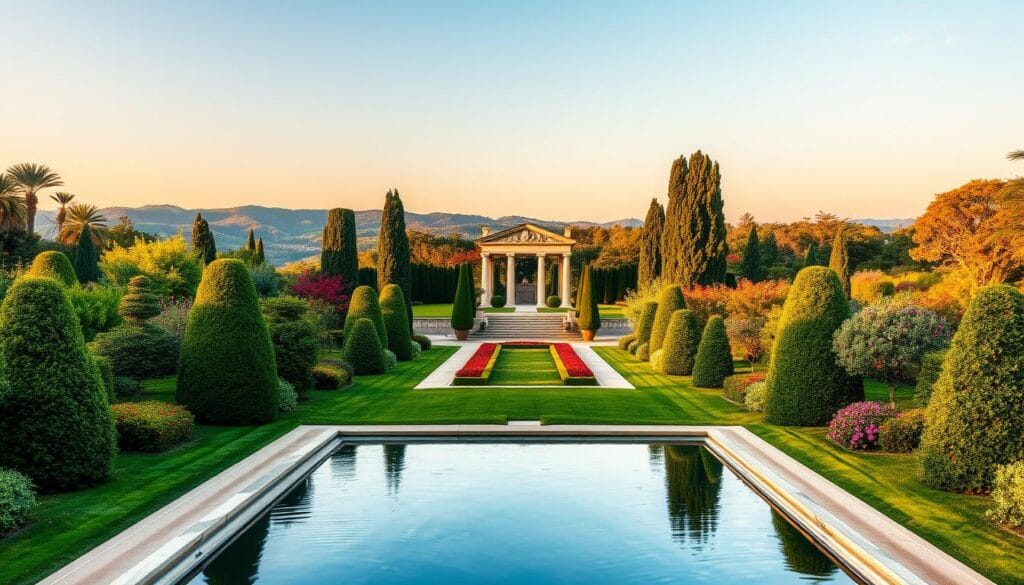
French Versailles-inspired designs use manicured hedges and geometric beds for opulence. Japanese layouts blend rocks and minimal plants for calm. Even small spaces can look sophisticated with vertical elements like framed bocce courts or faux plant walls.
Companies like LandArc and Stout Design Build show elegance doesn’t have to be expensive. Smart choices like drought-friendly tiles or blooming flower borders work on any budget.
Choose plants that look good all year, like olive trees or sculptural bougainvillea. Solar-powered path accents add evening elegance sustainably. Native plantings, such as California’s drought-tolerant grasses, cut maintenance while boosting curb appeal.
Remember, mature trees or structured beds can increase your home’s value by up to 20%. Every detail, from gravel pathways to framed window boxes, adds to a polished look. It feels intentional, not cluttered.
Front Bed Landscaping Ideas That Boost Curb Appeal
Improving front bed landscaping ideas can make your home more valuable and attractive. Realtors say 92% of buyers judge a house by its first look. So, making your front beds look good is crucial.
Working with Slopes
Got uneven ground? Use terraced beds or walls to make space. Slopes can turn into garden levels with plants like lavender or Russian sage. The University of Florida suggests mixing grass with ornamentals for looks and use.
Add groundcovers like creeping thyme to stop soil from washing away and add texture.
Decorative stones, stepping stones, or low walls can outline your beds. A birdbath or garden art can draw attention. Use brick or pavers to keep your garden neat and add structure.
Water-Efficient Options
In dry areas, pick plants like sedum or yarrow that need little water. Here’s a list of top picks:
| Plant | Benefits |
|---|---|
| Lavender | Perennial color and drought resistance |
| Russian Sage | Long bloom time and low water needs |
| Yarrow | Hardy groundcover with seasonal flowers |
Use drip irrigation systems for smart watering. eBay has cheap drip kits and mulch to keep soil wet. Choose evergreens like juniper or boxwood for green all year.
Good curb appeal comes from smart plants and practical design. Start small—add a few plants or edging—to see big changes.
DIY Garden Projects That Won’t Break the Bank
Want to update your garden without spending a lot? These DIY projects show you can achieve big results on a small budget. Start with weekend tasks that boost your garden’s look or make it cozier.
Weekend Garden Transformations You Can Complete Yourself
Here are some quick and easy projects:
- Paint a Fencing Facelift: A new paint job costs $20-$30 and takes 2-3 hours. Choose colors that match your home. Painted fences add 30% more curb appeal for minimal cost.
- Vertical Garden Rack: Use a metal rack (under £20) on a wall. Fill it with herbs or flowers for instant greenery.
- Bed Edging with Stones: Use river rocks or bricks to line beds. Costs $15-25 and takes a day. It adds definition without spending a lot.
- Upcycled Compost Bin: Make a bin from pallets or cinder blocks. Turns kitchen scraps into soil in weeks.
Upcycled Materials That Look Great in Your Garden
Give old items a new life with these ideas:
| Item | Use | Cost | Example |
|---|---|---|---|
| Old Wellies | Planters | Free | Fill with succulents or herbs for a quirky touch. |
| Corks | Plant Markers | Free | Write plant names with markers for easy identification. |
| Concrete Blocks | Modular Planters | $10-$20 | Stack to create raised beds for flowers or herbs. |
| Pallets | Vertical Gardens | $5-$10 | Mount on walls for climbing plants like clematis. |
Even small changes can make a big difference. Painting fences, reusing materials, and smart planting choices let you enjoy a vibrant garden without overspending. Start with structure—like edging or compost bins—then add decorative touches like upcycled planters. Most projects use tools you already have!
How to Maintain Your Beautiful Garden Throughout the Seasons
Regular care keeps your garden thriving year-round. Small weekly tasks prevent big problems. Follow these seasonal steps to protect your investment and enjoy a vibrant outdoor space.
Spring: Start by raking leaves and debris from beds. Prune lilacs, azaleas, and crabapples after they bloom. Apply pre-emergent weed control in early spring. Mulch with 2-3 inches of wood chips or compost. Test soil through your local university extension service for nutrient needs.
Summer: Water deeply early in the day. Deadhead spent blooms to encourage repeat flowering. Use obelisks or stakes to support tall plants. Inspect weekly for pests—remove by hand or use organic sprays. Mow grass at 2.5–3 inches to reduce stress.
Fall: Remove dead annuals and compost them. Plant spring bulbs like tulips and daffodils. Mulch perennial roots with straw or pine boughs. Audit your garden for plants needing replacement and repair walkways.
Winter: Clear fallen branches to expose grass to sunlight. Mulch tender plants with 4-6 inches of organic material. Plan new layouts during slow months. Check containers for cracks and prep soil for spring planting.
Pro tips: Rotate crops yearly to avoid soil depletion. Use compact plant varieties like ‘Boxwood Winter Gem’ to cut back on pruning. Store tools indoors to extend their lifespan. Indoor herb kits let you grow fresh greens even in cold months.
Conclusion: Bringing Your Dream Garden to Life
Your garden is more than just plants and paths. It’s a place where creativity and practicality meet. Whether you’re adding a small shrub border or a full yard makeover, every choice matters. Start by planning smart, budgeting well, and showing off your style with hardscaping or flower beds.
Take a look at a 3.5m x 4m pergola built in 2024. It became a key spot for family meals and gatherings. Even small projects can make a big difference. Weather challenges, like Edinburgh’s rain, remind us to pick tough plants like hostas or ones that don’t need much water.
Start with a simple idea, like making a DIY bench or planting a small flower bed. Each step boosts your confidence. Remember, every gardener faces surprises, but they all find joy in the process. Let your garden grow at your own pace and enjoy every moment, like winter evenings under string lights or spring blooms.
Take the first step today. Look for garden tools or seeds on eBay, draw a simple plan, or get ideas from local parks. Your dream garden is about growth, not perfection. Happy planting!
FAQ
How can I increase the curb appeal of my front yard?
What are some small front yard landscaping ideas for townhouses?
What is the importance of mulch in my garden design?
How can I create flower beds in front of my house that stand out?
What types of small bushes work well for landscaping?
What are the benefits of using black mulch in landscaping?
How do I create a welcoming garden entrance?
What elements contribute to elegant landscaping?
How can I handle slopes and uneven terrain in my front beds?
What are some DIY projects that can enhance my garden on a budget?
How can I maintain my garden throughout the seasons?
Source Links
- 100 Outdoor Design Ideas From House & Home – https://houseandhome.com/gallery/outdoor-design-ideas/
- 45 budget garden ideas for enhancing your outdoor space – https://www.idealhome.co.uk/garden/garden-ideas/budget-garden-ideas-197528
- 15 Creative Garden Idea Inspirations to Transform Your Outdoor Space – https://yardzen.com/landscaping-ideas/15-creative-garden-ideas?srsltid=AfmBOopbSDPjrluKbjXffuGGvAuZ7NtJ20BnRIUUSEbiJFEXAcfyGhfn
- 16 Garden Design Ideas to Transform Your Backyard – https://www.greenwashingindex.com/garden-design-ideas/
- 85 Surprising Front Yard Landscaping Ideas – https://www.architecturaldigest.com/gallery/front-yard-landscaping-ideas
- 82 Landscape Ideas for the Front Yard That Will Impress the Neighbors – https://www.thespruce.com/landscape-ideas-for-front-yard-6832875
- 11 Low Maintenance Front Yard Landscaping Ideas to Boost Curb Appeal – https://www.bhg.com/gardening/landscaping-projects/landscape-basics/front-yard-landscaping-ideas/
- Explore the Best Garden Bed Ideas for Every Yard – https://www.ergeon.com/blog/post/garden-bed-ideas
- 32 Flower Bed Ideas to Spruce up Your Garden – https://bowerandbranch.com/blogs/landscape-design/flower-bed-ideas-to-spruce-up-your-garden?srsltid=AfmBOoovAXZvpEaieM2lCOIysewKi9MS8rjG7uLg_JCkpAoBiLAJ-KHH
- 13 Best Backyard Mulch Ideas for a Beautiful Landscape [2025] – https://www.arkaenergy.com/learn/backyard-mulch-ideas?srsltid=AfmBOoqC4QiDgC_Vi6b_Udavp2c4e809FLLKt9B3vkpaYy1orGl8iKQA
- 32 Flower Bed Ideas to Spruce up Your Garden – https://bowerandbranch.com/blogs/landscape-design/flower-bed-ideas-to-spruce-up-your-garden?srsltid=AfmBOoqDITGH0_4usyNQZNubiJ55IRdPKqw5AECo2Mz-6r0RuexjCTT5
- 15 Front Yard Flower Bed Ideas: Revamp Your Landscape [2025] – https://www.arkaenergy.com/learn/front-yard-flower-bed-ideas?srsltid=AfmBOooDlBUTUBka71-xEc1cqKQcAEqjKWJ72WMumqUh13bnI1_u7dp4
- 16 Front Yard Flower Bed Ideas for a Welcoming Entryway – https://www.bhg.com/gardening/landscaping-projects/landscape-basics/front-yard-flower-power/
- 7 Low-Maintenance Plants For Front Yards – Boost Curb Appeal with Minimal Effort – https://www.gardeningknowhow.com/garden-how-to/lideas/low-maintenance-plants-for-front-yards
- 15 Drought-Tolerant Groundcovers for a Low-Maintenance Landscape – https://www.bhg.com/gardening/flowers/perennials/drought-tolerant-groundcovers/
- 30 flower bed ideas for your garden – https://www.gardenersworld.com/how-to/maintain-the-garden/flower-bed-ideas/
- 56 Black Mulch Landscaping Ideas to Boost Your Garden’s Appeal – WooHome – https://www.woohome.com/garden-2/black-mulch-landscaping-ideas
- Top Black Mulch Types and Creative Landscaping Ideas – https://thedetailguysmd.com/black-mulch/
- Discover Stunning Black Mulch Landscaping Ideas for Home – https://pristinelandscapingandlighting.com/discover-stunning-black-mulch-landscaping-ideas-for-home/
- Entryway Gardens: 3 Destinctive Designer Ideas – https://www.monrovia.com/be-inspired/entryway-garden-ideas.html?srsltid=AfmBOoqAAC4ItUQoGcbrjSVz2qFmxi7WK6fImmIMFGFKKvnA9cYHZhSp
- Create a Four-Season Front Entry – Fine Gardening – https://www.finegardening.com/article/create-a-four-season-front-entry?srsltid=AfmBOoruLlh16uMIxkbySmTDaFKobNnAPmwxEOs64H7_Hb-JJlz_TA62
- Front garden ideas that will elevate your entrance – https://www.granddesignsmagazine.com/garden/landscaping/front-garden-ideas/
- 85 Landscaping Ideas for an Enchanting Outdoor Space – https://www.housebeautiful.com/lifestyle/gardening/g2456/landscaping-ideas/
- 11 Sophisticated Landscape Design Ideas | Green Slate Design – https://www.greenslatedesign.com/11-sophisticated-landscape-design-ideas-to-elevate-your-home/
- Landscaping ideas for your Beverly Hills luxury estate – Joyce Rey | Luxury Beverly Hills Realtor – https://joycerey.com/blog/landscaping-ideas-for-your-beverly-hills-luxury-estate/
- 8 Curb Appeal Landscaping Ideas to Maximize Your Home’s Value – https://www.bhg.com/gardening/landscaping-projects/landscape-basics/landscape-for-curb-appeal/
- Gorgeous Front Yard Ideas That Take Practically No Upkeep – https://www.housebeautiful.com/lifestyle/gardening/g45035223/low-maintenance-landscaping-front-yard-inspiration/
- 24 Curb Appeal Landscaping Ideas Designers Love for a Beautiful, Blooming Entry – https://www.thespruce.com/curb-appeal-landscaping-8627626
- 26 cheap but brilliant ideas for your garden – https://www.housebeautiful.com/uk/garden/designs/g28/garden-ideas-on-a-budget/
- Try These 6 Budget-Friendly Landscaping Projects – https://www.thisoldhouse.com/landscaping/22309877/budget-friendly-landscaping-projects
- 11 Simple Front Yard Landscaping Ideas That Won’t Break the Bank – https://www.marthastewart.com/cheap-simple-front-yard-landscaping-ideas-8777630
- Early Spring Garden Maintenance: Your Personal Guide to Preparing for a Beautiful and Abundant Garden This Year | Life Garden Style – https://www.lifegardenstyle.com/blog/early-spring-garden-maintenance
- 8 things people with tidy gardens always do – for an elegant, serene outdoor space – https://www.homesandgardens.com/gardens/how-to-maintain-a-tidy-garden
- Seasonal Gardening Tips: A Guide to Year-Round Splendor | EZ Flo Injection Systems – https://ezfloinjection.com/seasonal-gardening-tips-a-guide-to-year-round-splendor/?srsltid=AfmBOool5fVJcyRofmp3-GB4oxSi1rC7euJdQ3EUmcWR678BuDW_h8_d
- Designing with Purpose: How Reflecting on My Garden Helped Me Create the Perfect Pergola — joyful garden – https://joyfulgarden.co.uk/blog/reflect-garden
- The garden of life brings many emotions – https://www.jamestownsun.com/lifestyle/the-garden-of-life-brings-many-emotions

